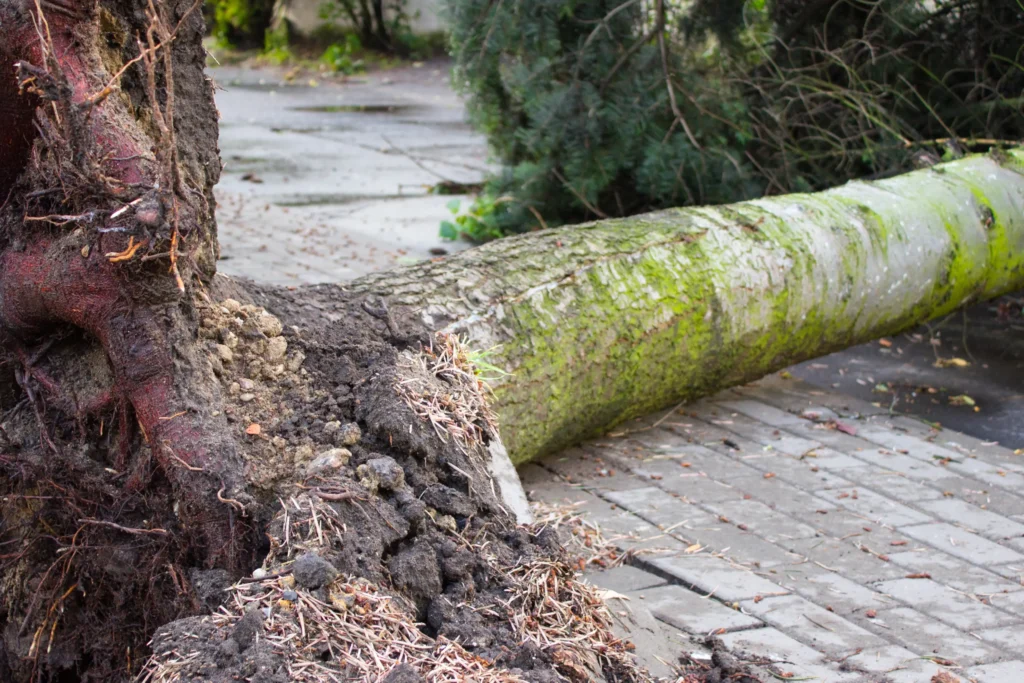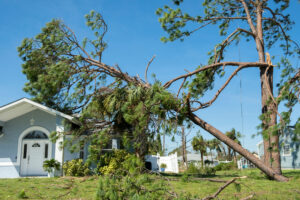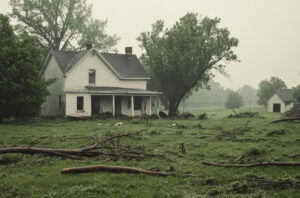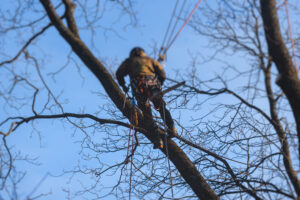In an area where winter conditions can get a little harsh like New Jersey, tree care in the fall is the surest way to ensure your landscape remains healthy and vibrant throughout the cold months ahead.
Even though professional tree care is the secret to a lush landscape, you can still achieve some things by yourself.
This article explores some of the tree care practices to adopt and ensure your landscape is well braced for the cold winter months ahead.
Fertilization
Feeding your trees with the right nutrients months before winter, let alone the fall, is critical to ensuring they are adequately braced for the cold temperatures ahead. Fertilization, months before winter, can accelerate growth to achieve strong branches and some bits of maturity that can help the tree withstand the adverse frost.

Is your yard ready for wind and snow?
Coming down to the fall, ensure the fertilizer you feed your trees is low in nitrate to prevent the growth of new young branches, as these will barely survive the cold months. Even though trees enter into some dormancy during winter, they will still need some nourishment, which is why you should apply slow-releasing fertilizer.
Pruning and Trimming
Too many young and new branches can affect the wellbeing of a tree in the cold winter months. So many young branches can be swayed by the strong winds and end up breaking the tree. To avoid this scenario, ensure you prune and trim your trees just before the onset of the winter, in fall. As you do that, remember to remove dead twigs and branches as these can transfer the rot to the rest of the tree during heavy precipitation. Extra care should be observed during pruning and trimming as accidents can occur when working at heights.
Watering
Contrary to most people’s belief, the ground beneath the snow hardly gets water during the low winter temperatures. Since you want to achieve continued growth of your landscape trees, you should consider watering them adequately in the fall as the little moisture left will nourish them throughout the season. Deep watering will also support the development of a stronger root system to damage-proof the tree against adverse elements. As you go about watering the trees, avoid overhead watering and doing it so close to the trunk base as this can contribute to rotting.
Pests and Disease Control
Tree care in the fall also entails thoroughly inspecting for pests and diseases and combating the issue beforehand. This is given that diseases may worsen during the cold winter months due to the heavy precipitation received. If you are unsure of what disease or pest you are dealing consider inviting a local arborist for professional advice.
Tree Care
While mature and strong trees are better braced for adverse winter elements such as heavy snowfall, we cannot say the same about young and small trees. These can bend, break, or suffer permanent damage under strong winds or heavy snowfall. To prevent this scenario, consider staking or covering them with a wrap, snow fence, or using windbreaks throughout the entire period. To prevent snow buildup on young unprotected trees, consider shaking the branches from time to time throughout the season.
Mulching
Mulching has the benefit of retaining moisture to ensure the tree is always nourished in the fall, and going into the winter. Instead of plastic which can encourage tree rot through moisture buildup, use organic materials such as sawdust, straws, leaves, and wood chips to mulch your trees. Ensure not to bring the mulch so close to the trunk base as that too, can cause tree rot.
Leaf Cleanup
In addition to trimming and pruning, leaf cleanup also forms part of the critical tree care to be conducted in preparation for winter. Dead leaves, upon coming into contact with heavy winter precipitation, can decay and harbor diseases and mold, both of which can kill the tree. While most of the raked leaves can be used as mulch, too much of it can harbor diseases such as tree rot and mold. Alternatively, the excess leaves can be composted to make organic fertilizer for future use.
By leveraging these fall tree care practices, New Jersey residents can protect their trees against adverse winter elements and achieve healthy and lush landscapes throughout the entire season. Even with adequate information, none beats the impact of professional tree care. It may be a little expensive but choosing this option will save you lots of money in the long run.




